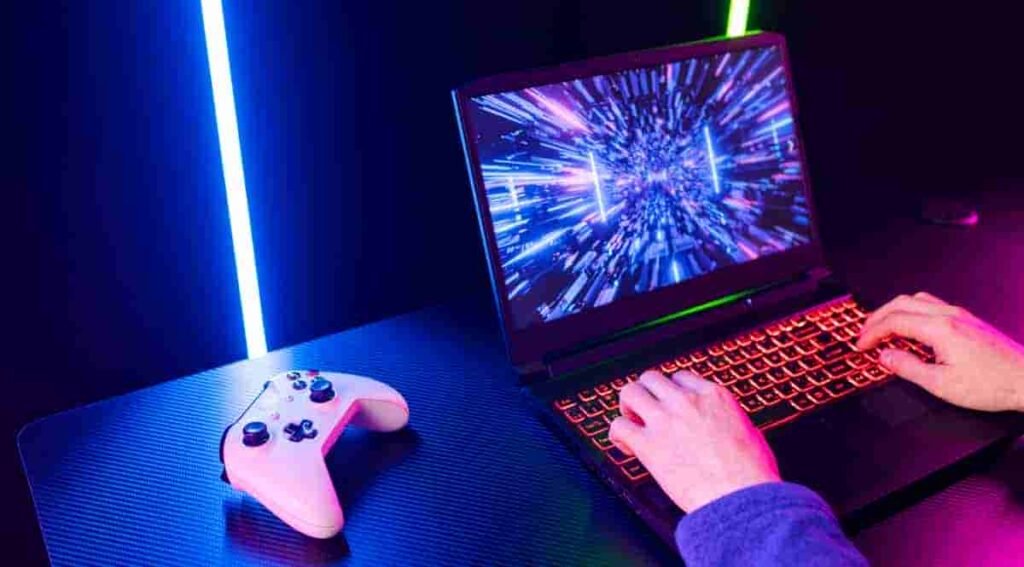Top Laptops Under 30k (₹30,000) (Comprehensive Guide)
Finding a reliable laptop under ₹30,000 can feel like walking a tightrope—balancing performance, battery life, display quality, and build within a tight budget. In this guide, I’ll walk you through what to expect at this price point, how to prioritize features based on use case, and recommend several laptops (or categories/models) that typically offer the best value. This post is aimed at helping students, casual users, and small-business owners make an informed buying decision.
Table of contents
- Why buy a laptop under ₹30,000?
- What you can realistically expect at this price
- Key features to prioritize (by use case)
- Recommended laptop picks and why
- Tips for buying: deals, warranties, and inspections
- How to extend the life of your budget laptop
- Frequently asked questions (FAQs)
- Final recommendations
Why buy a laptop under ₹30,000?
- Affordability: For students, first-time buyers, or those needing a secondary device, ₹30,000 is often the sweet spot for basic computing without heavy compromises.
- Simplicity: At this price, devices are optimized for everyday tasks—browsing, document editing, video calls, media consumption, and light multitasking.
- Portability: Many budget laptops are lightweight and compact, making them good for on-the-go use.
- Good for specific needs: If your tasks don’t include heavy gaming, video editing, or large simulations, a budget laptop is often sufficient.
What you can realistically expect at this price
- Processor: Entry-level Intel (Celeron, Pentium, or some Core i3 older gens) or AMD Athlon/Ryzen 3 / Ryzen 3015U/3250U class chips, and often ARM-based or specialized low-power chips in Chromebooks.
- RAM: Typically 4GB to 8GB. 8GB is preferable—4GB may limit multitasking.
- Storage: 256GB SSD is ideal but you may find 128GB SSD or 500GB HDD. SSDs significantly improve perceived speed.
- Display: 11–15.6″ screens, often 1366×768 (HD) or sometimes 1920×1080 (FHD) in better models.
- Build & keyboard: Plasticky but serviceable. Keyboard quality varies—test if possible.
- Battery: 4–8 hours in real-world use; vendor claims may be optimistic.
- Connectivity: Wi‑Fi, Bluetooth, USB-A/USB-C (varies), HDMI sometimes, and a 3.5mm jack.
- Operating system: Windows 11 in S mode is common; Chromebooks run ChromeOS and can be more responsive on low-end hardware.
Key features to prioritize (based on use case)
- For students and general users:
- RAM: Aim for 8GB if possible.
- Storage: Prefer SSD (at least 128GB). SSD > HDD for snappier performance.
- Battery life: Minimum 6 hours real-world.
- Portability: Lightweight and compact design helps.
- For web browsing, video calls, and remote work:
- Good webcam and microphone quality.
- Reliable Wi‑Fi (preferably dual-band).
- For watching movies and media:
- A better display (FHD if available) and decent speakers.
- For coding / light development:
- 8GB RAM, SSD, and a comfortable keyboard.
- For offline productivity (no heavy multimedia):
- Chromebooks are often excellent value—fast, secure, and low maintenance.
Recommended laptop picks (categories and typical models)
Note: Specific model availability and prices fluctuate. The brands/models below are representative of what to look for under ₹30,000. Check current listings, seller reputation, and reviews before buying.
1) Best general-purpose Windows laptops (value-oriented)
- HP 15 / Lenovo IdeaPad 1 / Dell Inspiron 15 (entry variants)
- Typical specs: Intel Celeron/Pentium or AMD Athlon / Ryzen 3 (entry), 4–8GB RAM, 128–256GB SSD or 1TB HDD, 15.6″ display.
- Why choose: Reliable after-sales, larger displays, full Windows experience.
- Watch out for: Many base models ship with 4GB RAM—upgradeable models are better.
2) Best for performance per rupee (AMD-based)
- Lenovo IdeaPad / Acer Aspire with AMD Athlon or Ryzen 3
- Typical specs: AMD Athlon/RYZEN 3, often with better integrated graphics and multitasking than equivalent Intel Celeron chips.
- Why choose: Often better multitasking and value than Intel Atom/Celeron models.
- Ideal for: Multitasking, streaming, light photo editing.
3) Best Chromebooks (if your workflow is web/cloud-based)
- Acer Chromebook 314 / Lenovo Chromebook 3 / HP Chromebook
- Typical specs: ChromeOS, 4–8GB RAM, 32–128GB eMMC or small SSD, 11–14″ displays.
- Why choose: Fast boot, simple maintenance, long battery life, often cheaper for similar hardware.
- Ideal for: Students, browsing, Google apps, lightweight productivity.
- Caveat: ChromeOS is limited when offline or for specialized Windows apps.
4) Best for portability and battery life
- Lightweight 11–14″ models from ASUS, Lenovo or HP (entry Ultrabook trims)
- Typical specs: 11–14″ HD screens, 4–8GB RAM, SSD storage.
- Why choose: Easier to carry around, often decent battery life.
- Tradeoff: Smaller keyboards and possibly lower resolution screens.
5) Best for storage & expandability
- Models with upgradeable storage/RAM (many 15.6″ budget laptops)
- Choose a model with an M.2 slot and extra RAM slot so you can upgrade later—this extends useful life.
Example configurations to aim for (priority order)
- 8GB RAM + 256GB SSD (or 128GB SSD + larger SD storage) + Ryzen 3 or equivalent — ideal target.
- 8GB RAM + 128GB SSD + HD display + good battery — acceptable compromise.
- 4GB RAM + 1TB HDD — avoid unless price is compelling or you will upgrade RAM/SSD later.
- Chromebook with 4–8GB RAM and 64–128GB eMMC — excellent if you live in Google ecosystem.
Tips for buying: deals, warranties, and inspections
- Check upgradeability: Open-slot RAM or spare M.2 slot is valuable. You can add RAM/SSD later.
- Prefer SSD over HDD even if smaller capacity—system responsiveness improves dramatically.
- Look for RAM of 8GB in listings or models with easy RAM upgrade path.
- Sales windows: Big discounts during festive sales, bank offers, exchange offers, or student discounts can push higher-tier models into this price bracket.
- Warranty & support: Prefer 1-year onsite warranty from the OEM when possible.
- Read reviews: Look for real-user reviews that discuss thermal performance, keyboard feel, and battery.
- Inspect before buying (if buying in-store): check keyboard, trackpad, screen brightness/angles, and ports.
- Battery testing: Open a few web tabs, play a video for 15 minutes—check if temperature climbs or fan noise becomes excessive.
How to extend the life of your budget laptop
- Upgrade RAM/SSD as budget allows—this often yields the best performance improvement.
- Use lightweight apps: Replace heavy software with web or lightweight alternatives (e.g., use Google Docs instead of Microsoft Word desktop).
- Keep it cool: Use on a hard surface, consider a cooling pad if you do more intensive tasks.
- Regular maintenance: Disk cleanup, occasional OS reinstall if it slows down, and keep drivers updated.
- Use an SSD: If your laptop has HDD and an M.2 slot, add an SSD as system drive and use HDD for bulk storage.
Frequently asked questions (FAQs)
Q: Should I buy a Chromebook or a Windows laptop under ₹30,000?
- A: Choose ChromeOS if your work is web/cloud-based and you want a snappier experience on low-end hardware. Choose Windows if you need desktop applications unavailable on ChromeOS or you require specific Windows-only software.
Q: Is 4GB RAM enough?
- A: 4GB is the bare minimum. For comfortable multitasking, try to get 8GB, or ensure the laptop allows a RAM upgrade.
Q: Is it worth buying used or refurbished laptops?
- A: Yes, if from a reputable seller with warranty. Refurbished higher-tier laptops (older Core i5/i7 with upgraded RAM/SSD) can outperform new budget models.
Q: Can budget laptops handle light gaming?
- A: Integrated GPUs in budget AMD chips can handle older or indie titles and low-settings play. Don’t expect AAA gaming performance.
Final recommendations (quick checklist before purchase)
- Best overall value: Look for AMD Ryzen 3 / Athlon models with 8GB RAM and an SSD.
- Best for students: Chromebook with 8GB RAM (if mainly cloud apps) or a Windows laptop with 8GB + SSD.
- Best if you want upgradeability: 15.6″ Windows laptops with extra RAM slot and M.2 slot.
- If on a very tight budget: Opt for an SSD-based model even if it’s 128GB—snappier system performance matters more than raw storage at first.
Closing thoughts
A ₹30,000 budget can get you a capable, reliable laptop—especially if you prioritize the right features: RAM (8GB), SSD, and upgradeability. Chromebooks are often underrated in this segment and can offer better day-to-day performance for cloud-focused users. Always balance immediate needs with upgrade paths so the machine remains useful for years.
Also Read,

